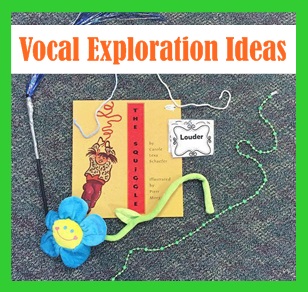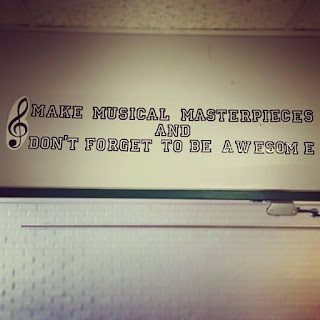Candy is a
relevant topic for my kids any day all the time, but right after Halloween
candy is all they want to talk about. I decided to use that to my advantage
with a connection to rhythm.
My district
is really pushing for essential questions in the classroom. For this lesson, I
actually really liked using one. I put this question on the board: “How does
rhythm relate to language?” We discussed it, and at first the main answer I got
was a shrug. Then we talked about rap and hip-hop using words with rhythms, which
blew their minds. It was a good hook for when we entered into the candy rhythm
activity.
The
manipulatives were pretty easy to make. I found images of several popular
candies, printed them out, and had them laminated. The best part about this is
I can use the same manipulatives in several different ways. Here are the four I
am using, but I am sure there are more. If you use something similar in a
different way, I would love to know!
1.) Partner
work, notating rhythms
After
reviewing previous rhythms, we took candies and assigned rhythms to them. If
you like, you could give each candy an assigned rhythm. I wanted to up the
rigor, so kids were welcome to use whichever candy they wanted as long as each
syllable of the word was represented. Kit-Kat, for example, could be both
paired eighth notes and a dotted quarter/eighth rhythm.
Once kids
had the idea, we decided on a candy as a class and students decided which
rhythm they wanted with the candy. They then notated those rhythms. After being
comfortable with working on the same rhythm as a class, kids created their own
rhythms with their partner and performed them for another group.
Here is an example of a page from my SMART file for this activity.
2.) Guided
identification
For first
grade, rhythms are still a fairly new concept so candy rhythm was a bit more
structured and guided. We started with using the smart board to make connections
between syllables and note heads (yeah cross-curricular!) and matching rhythms
to candies. Then, we added manipulatives. Students used a sorter with
definitions to sort tiny quarter notes, eighth notes, and quarter rests. We
then used those rhythms to match them to the correct candy. The kids LOVED this activity. They were eerily well behaved with bubbles in their mouths the whole class so they had more time for "the candies". My latest formal observation happened to fall during this lesson, and my admin loved it too.
A page from the SMART file.
3.) Rhythm
Flash Cards
I have a
GIANT pile of rhythm flash cards, so this allows students to start with the
rhythm and find a candy to match. There are several answers to each card, so
students enjoy comparing with a partner and checking each other’s work.
4)
Composition/Performance Task
Since we
already use the manipulatives to help us identify rhythms, using them as tools
for composition is a natural transition. Students are given some parameters
(time signature, how many beats, required rhythms, and so on) and complete
their composition alone or with partners. Once the rhythm can be completed with
clapping, students move their composition to a non-pitched percussion
instrument of their choice.
My district
is also big on performance tasks, and this activity can absolutely fit the
bill. If you would like to approach this as a performance task, here is a
sample scenario (feel free to switch out any specific to work for you):
A candy store
has hired you to create a chant for a commercial using the names of popular
candies. You will create an eight beat chant in 4/4 time using the names of at
least four candies. Your rhythm must include at least one dotted quarter/single
eighth OR one triplet. You can also use whole notes, dotted half notes, half
notes, quarter notes, eighth notes, sixteenth notes wholes rests, half rests,
or eighth rests. You may perform this rhythm using body percussion or
non-pitched percussion. Your chant will be recorded so it can be sent to the
candy store CEO for approval.
Here it is
all pretty:
Looking for
more ideas for rhythm? There are several in this post.
Hope you
found a delicious idea to take back to your classroom!























































